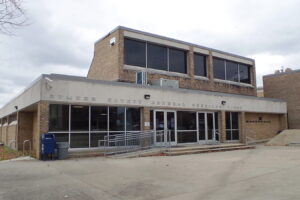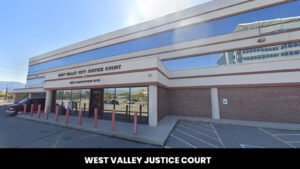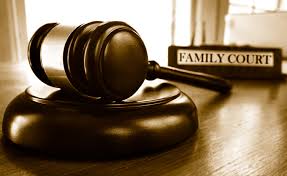Middle District of Louisiana Federal Court
The United States District Court for the Middle District of Louisiana is one of three federal judicial districts in Louisiana. It covers the central portion of the state, including the capital city of Baton Rouge. The Middle District plays an important role in the federal judiciary by interpreting federal law and applying it at the trial court level. This article will provide an overview of the court’s history, jurisdiction, facilities, judges and staff, caseloads, and role in the Louisiana legal community. Key details for lawyers practicing in the Middle District will also be provided.
History and Formation of the District
The Middle District of Louisiana was established on April 8, 1823 by a statute passed by Congress. It was one of the original 13 federal judicial districts created by the First Judiciary Act in 1789. At that time, the district covered a much larger geographic area than it does today. Portions of the Middle District were split off in 1842 to help form the Eastern District and Western District of Louisiana.
Additional changes took place in the 20th century, with parishes moving between the Middle and Eastern Districts. The Middle District reached its current composition in 1966 when Allen, Beauregard, Calcasieu, Cameron, Jefferson Davis and Vernon Parishes were returned to the Western District.
Geographic Boundaries
The modern Middle District of Louisiana includes the following parishes:
- Ascension
- East Baton Rouge
- East Feliciana
- Iberville
- Livingston
- Pointe Coupee
- West Baton Rouge
- West Feliciana
It covers a region in the central part of Louisiana spanning both sides of the Mississippi River. The district extends as far north as St. Helena Parish and as far south as Assumption Parish. In total, it covers approximately 15,000 square miles.
Parishes Covered
There are eight parishes fully contained within the Middle District of Louisiana:
- Ascension Parish: Located southeast of Baton Rouge along the Mississippi River. Donaldsonville is the parish seat.
- East Baton Rouge Parish: Home to the state capital and district headquarters in Baton Rouge. It is the most populous parish in the district.
- East Feliciana Parish: Rural parish north of Baton Rouge along the Mississippi border. Clinton is the parish seat.
- Iberville Parish: Located between Baton Rouge and Lafayette along the Mississippi River. Plaquemine is the parish seat.
- Livingston Parish: Suburban parish east of Baton Rouge. Livingston is the parish seat.
- Pointe Coupee Parish: Lies northwest of Baton Rouge with New Roads as its parish seat.
- West Baton Rouge Parish: Located west of the Mississippi River from Baton Rouge. Port Allen is the parish seat.
- West Feliciana Parish: Rural parish north of Baton Rouge near the Mississippi border. St. Francisville is the parish seat.
Courthouses and Facilities
The Middle District of Louisiana is headquartered at the Russell B. Long Federal Building in Baton Rouge. It also utilizes other facilities within its geographic bounds.
Russell B. Long Federal Building
The Russell B. Long Federal Building and United States Courthouse located in downtown Baton Rouge serves as the main courthouse and office location for the Middle District. It houses three district courtrooms along with judges’ chambers and the clerk’s office.
The courthouse was built in 1965 and renamed for former Louisiana senator Russell B. Long in 1985. It is located at 777 Florida Street, with Room G-48 serving as the U.S. Marshal’s office.
Other Facilities
The Middle District also utilizes courtrooms in the parishes of New Roads, St. Francisville, and Plaquemine to serve outlying areas. The court may convene at any suitable location within its district boundaries as needed.
Judges and Staff
The Middle District of Louisiana has a total of five district judges and three magistrate judges. These lifetime appointees preside over cases and controversies arising under federal law. Supporting them is the staff of the U.S. Attorney’s Office, U.S. Marshals Service, and federal public defender.
District Judges
There are currently five federal district judges serving the Middle District of Louisiana:
- Chief Judge Shelly D. Dick
- Judge James D. Cain, Jr.
- Judge John W. deGravelles
- Judge Dee D. Drell
- Judge Brian A. Jackson
District judges are nominated by the President and confirmed by the Senate for lifetime terms. The chief judge, who serves for a seven-year term, is the administrative head of the court.
Magistrate Judges
Serving under the district judges are three federal magistrate judges:
- Magistrate Judge Erin Wilder-Doomes
- Magistrate Judge Richard L. Bourgeois, Jr.
- Magistrate Judge Scott D. Johnson
Magistrate judges handle preliminary criminal matters, issue search warrants, conduct trial preparations, and address discovery disputes among other duties. They are appointed by the judges of each district and serve eight-year renewable terms.
U.S. Attorney’s Office
The United States Attorney’s Office prosecutes federal crimes and represents the United States government in civil litigation. The current U.S. Attorney is Ronald C. Gathe, Jr., who was appointed in 2021. The office is located at 777 Florida Street in Baton Rouge.
U.S. Marshals Service
The U.S. Marshals Service supports the federal judiciary by serving orders, warrants and writs issued by the court. The Marshal for the Middle District of Louisiana is William Travis Brown, Jr. His office provides security at all courthouses and facilities.
Jurisdiction and Caseloads
Federal district courts like the Middle District of Louisiana have jurisdiction over civil and criminal matters arising under federal law. Cases may relate to the U.S. Constitution, statutes, regulations, or treaties.
Types of Cases
The Middle District hears both civil and criminal cases covering issues such as:
- Federal crimes
- Civil rights
- Securities fraud
- Patent and copyright
- Admiralty law
- Bankruptcy
- Environmental law
- Federal tax disputes
Criminal cases involve prosecutions by the U.S. Attorney’s Office. Civil suits may be between private parties or involve the federal government.
Notable Cases
Over the decades, the Middle District has presided over numerous high-profile cases, including:
- U.S. v. Edwin Edwards – 2005 corruption trial of former Louisiana governor
- Stockman v. LSU Board of Supervisors – 1970 desegregation case
- U.S. v. Berrigan – 1973 prosecution of five Catholic anti-war activists
- Castle v. Hayes Freight Lines – 1984 class action racial discrimination case
- U.S. v. Doyle – 2007 criminal case over failed levees in Hurricane Katrina
Practical Information for Attorneys
Attorneys who may practice before the Middle District of Louisiana should be aware of the local rules, filing procedures, contact information, and other logistics.
Local Rules
The Middle District has developed its own set of local rules that supplement the Federal Rules of Civil and Criminal Procedure. These address issues unique to practice in the district, such as courtroom technology and lawyer discipline.
Filing Information
Civil and criminal case filings can be submitted in person at the clerk’s office or electronically through PACER. The current clerk is Angela Mixon. Pro se litigants without lawyers may file papers by mail.
Contact Information
Contact details for key offices associated with the Middle District Court are:
- Clerk’s Office: (225) 389-3500
- District Judges: (225) 389-3570
- Magistrate Judges: (225) 389-3584
- U.S. Attorney’s Office: (225) 389-0443
- U.S. Marshals Service: (225) 389-0364
Role in the Legal Community
As the sole federal trial court in central Louisiana, the Middle District plays an integral role in the legal community. It has important interactions with state courts and lawyers’ groups.
Interaction with State Courts
Although the Middle District hears only federal cases, its work may intersect with state courts. For example, the court may remand appropriate removed cases back to state court. State-federal jurisdictional questions can arise. The Middle District also sets precedents on federal law that influence state courts.
Bar Associations and Lawyers
The Middle District holds bar admission ceremonies several times a year for newly licensed Louisiana attorneys. The Baton Rouge Bar Association provides opportunities for networking and pro bono work related to the court. Non-profit groups like the Louisiana Appleseed Center for Law & Justice engage with issues and cases before the Middle District.
Conclusion
In summary, the key facts about the U.S. District Court for the Middle District of Louisiana include:
- Covers eight central Louisiana parishes including Baton Rouge
- Headquartered at the Russell B. Long Federal Courthouse
- Has jurisdiction over federal law disputes in its geographic area
- Composed of five district judges and three magistrate judges
- Overseen by U.S. Attorney Gathe and U.S. Marshal Brown
- Handles an array of civil and criminal federal cases
- Plays a vital role in the Louisiana legal community
FAQs
Here are answers to some frequently asked questions about the Middle District of Louisiana:
Q: How can I access public records for the Middle District Court?
A: Court records can be accessed online through PACER or by visiting the clerk’s office in person. Some documents may be sealed or restricted.
Q: Where do Middle District judges get their authority?
A: District judges are authorized under Article III of the U.S. Constitution. They are nominated by the President and confirmed by the Senate.
Q: What’s the difference between district and magistrate judges?
A: District judges are life-tenured while magistrate judges serve fixed 8-year terms. District judges preside over trials while magistrate judges handle preliminary matters.
Q: What’s the best way to research precedents from the Middle District?
A: Published opinions can be researched in the Federal Supplement or on legal research sites like Westlaw or LexisNexis. Unpublished opinions may also be influential.
Q: How can I qualify to become a member of the bar for the Middle District?
A: You must be an active member in good standing of the Louisiana State Bar to qualify for the Middle District bar. Pro hac vice admission is also available.





